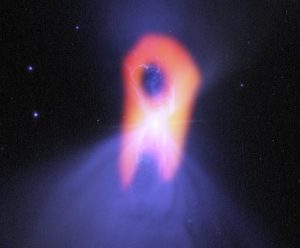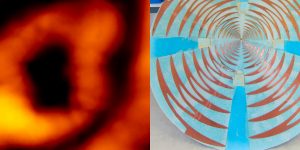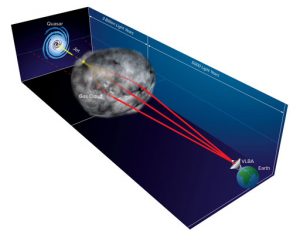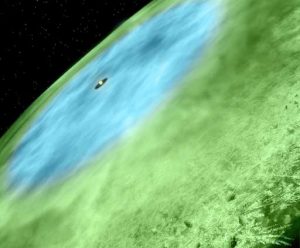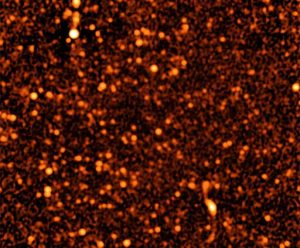At a cosmologically crisp one degree Kelvin, the Boomerang Nebula is the coldest known object in the Universe.
NRAO Media Tip Sheet September 2015
NRAO Media Tip Sheet September 2015: Science, engineering, and technology milestones.
ALMA Opens Another Window on the Universe with Band 8 Receivers
ALMA has opened another window on the Universe as astronomers successfully used the new Band 8 receivers to observe the distribution of atomic carbon in a planetary nebula dubbed NGC 6302.
Gas Cloud Causes Multiple Images of Distant Quasar
For the first time, astronomers have seen the image of a distant quasar split into multiple images by the effects of a cloud of ionized gas in our own Milky Way Galaxy.
Snow Falling Around Infant Solar System
The sight of a snowfall can thrill children, but the first-ever snow line seen around a distant star gives astronomers an even greater thrill because of what it reveals about the formation of planets and our Solar System’s history.
VLA Gives Deep, Detailed Image of Distant Universe
Staring at a small patch of sky for more than 50 hours with the ultra-sensitive Very Large Array, astronomers have for the first time identified discrete sources that account for nearly all the radio waves coming from distant galaxies.






